0 / 32
0 / 32
What Makes Muay Thai a Beloved Sport Worldwide?
October 24, 2024

When you think of Muay Thai, you might imagine the intense strikes, powerful kicks, and thrilling knockouts that leave audiences on the edge of their seats. Maybe you’ve watched fighters in movies like Ong Bak or Kickboxer showcasing brutal fight scenes or seen warriors fiercely battling in the ring on TV. But what if we told you Muay Thai is so much more than just a combat sport?
Muay Thai, known as the “Art of Eight Limbs,” is an ancient martial art with a rich cultural history that stretches back centuries. It’s a sport that combines physical strength, mental discipline, and spiritual values in a way that makes it one of the most respected and captivating martial arts in the world. And today, Muay Thai is no longer confined to Thailand—it has captured the hearts of people around the globe, from fitness enthusiasts looking for a full-body workout to dedicated fighters mastering the art of combat.
But what exactly makes Muay Thai so beloved worldwide? Why do people travel from all corners of the earth to train in Thailand? How did this martial art, with its roots in ancient warfare, become a global sensation? In this article, we’ll dive deep into the fascinating world of Muay Thai, exploring the unique blend of tradition, power, and artistry that makes it unlike anything else. Whether you’re new to the sport or a Muay Thai enthusiast, prepare to discover why this legendary fighting style continues to thrive across cultures and continents.
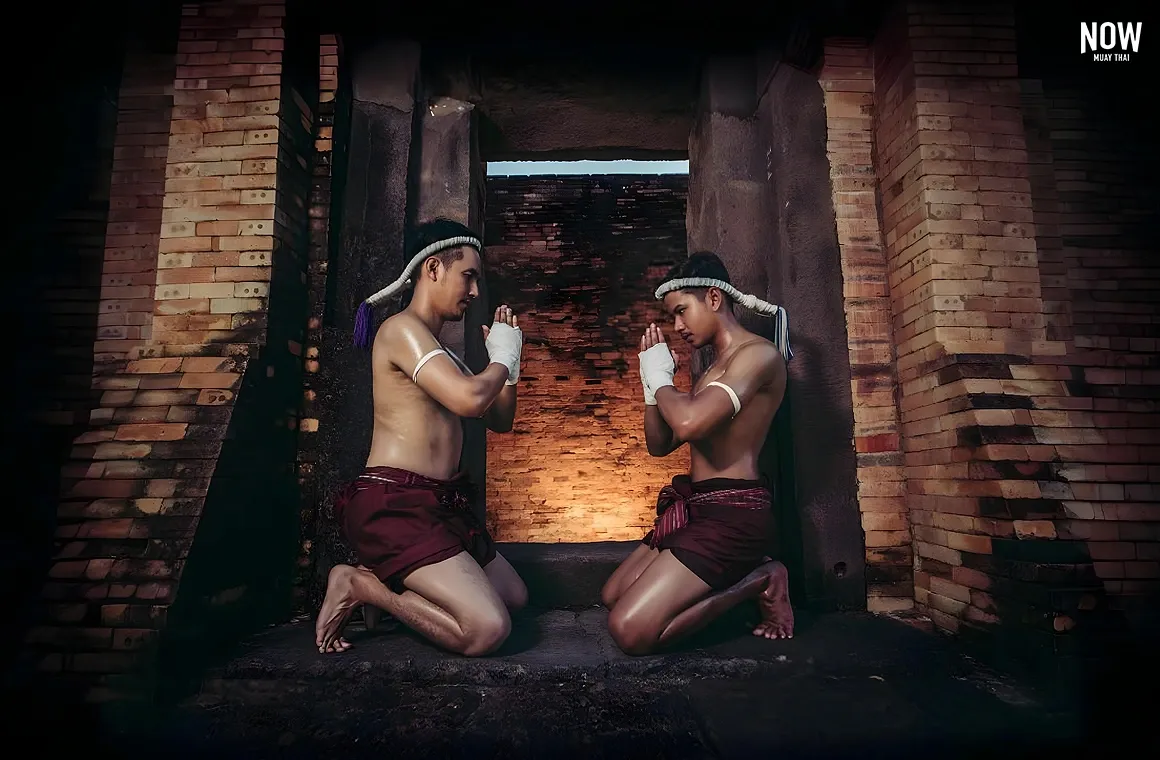 Two Muay Thai fighters performing the Wai Kru ritual, showing respect to their teachers and embracing the spirit of Thai culture before their match. The image captures the deep tradition and fighter’s discipline as they mentally prepare for the battle ahead.
Two Muay Thai fighters performing the Wai Kru ritual, showing respect to their teachers and embracing the spirit of Thai culture before their match. The image captures the deep tradition and fighter’s discipline as they mentally prepare for the battle ahead.
A Deeper Dive into Tradition and Culture
Muay Thai is not just a sport; it’s a window into Thailand’s deep cultural heritage. Its origins can be traced back to ancient Thailand, where it was developed as a powerful combat system to defend the kingdom. Historically, Muay Thai was used by soldiers and warriors to protect their land and king, evolving from military training to a way of life. But even beyond warfare, Muay Thai became woven into the social fabric of Thai society. For generations, it has been passed down from teacher to student, not only as a physical skill but also as a practice grounded in respect, honor, and discipline.
One of the most powerful symbols of this respect is the Wai Kru, a ritual performed by every fighter before stepping into the ring. This ritualistic dance isn’t just about tradition—it’s a personal expression of gratitude towards the teacher (Kru), ancestors, and the art of Muay Thai itself. In this ceremony, fighters clear their minds and prepare mentally for the battle ahead, focusing their energy and spirit. It’s a beautiful way to connect with the past and the present, showing that Muay Thai is as much about mental strength as it is about physical power.
In fact, Muay Thai’s connection to Thai culture is what makes it so exciting. When you watch a Muay Thai fight or step into a training session, you’re not just engaging in a combat sport; you’re participating in a tradition that has thrived for centuries. The rhythmic movements of the Wai Kru, the ceremonial music played during matches, and the passionate cheers from the audience all add to the electrifying atmosphere. It’s these cultural elements that make Muay Thai not only fun to watch but thrilling to experience—whether you’re training or sitting ringside.
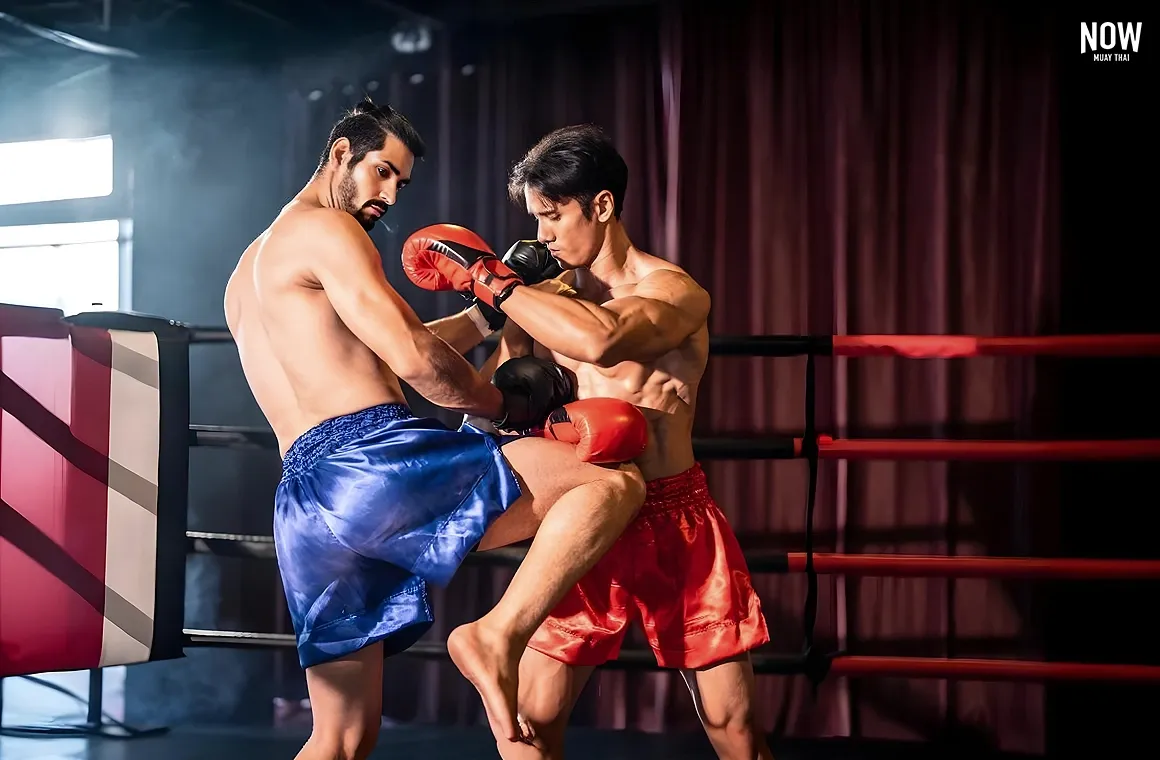 Two Muay Thai fighters engage in a dynamic display of the "Art of Eight Limbs." One fighter blocks a knee attack with his arm, while swiftly countering with a powerful left hook, demonstrating the precision, power, and strategy that make Muay Thai a unique and effective martial art.
Two Muay Thai fighters engage in a dynamic display of the "Art of Eight Limbs." One fighter blocks a knee attack with his arm, while swiftly countering with a powerful left hook, demonstrating the precision, power, and strategy that make Muay Thai a unique and effective martial art.
The Art of Eight Limbs: Power, Precision, and Strategy
What sets Muay Thai apart from other martial arts is its use of the "eight limbs"—a strategic combination of fists, elbows, knees, and shins. Each limb serves a distinct purpose in both offense and defense, blending power with precision, making Muay Thai the most efficient and versatile striking art in the world.
The fists (mud) are used for delivering fast, powerful punches similar to those in Western boxing, but with an added layer of fluidity and adaptability. Fighters in Muay Thai seamlessly connect their punches with other striking points of the body, making transitions between attacks more fluid than in many other martial arts. Punches are not just thrown with the arms; they are powered by the entire body, using the hips and shoulders to generate maximum force.
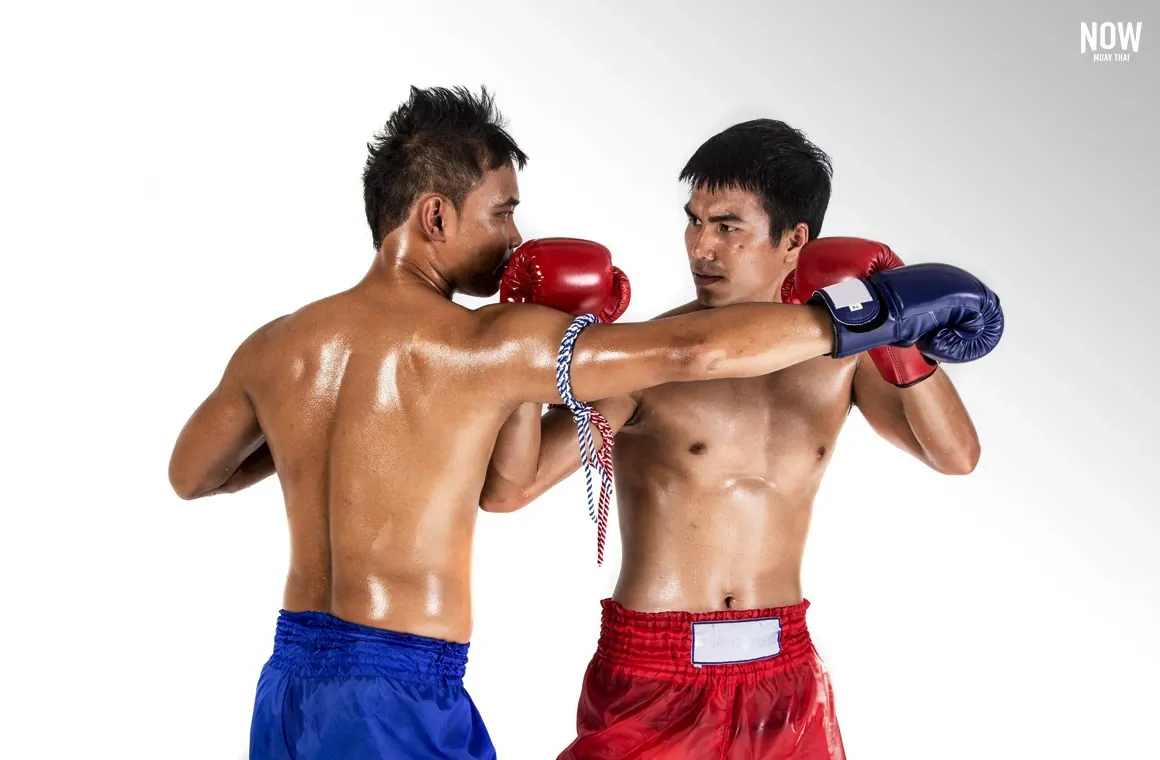 Two Muay Thai fighters demonstrate "Kon Muay Kae Mud," a defensive punch strategy. One fighter skillfully blocks an incoming punch while preparing to counter, showcasing the tactical balance of defense and offense in Muay Thai.
Two Muay Thai fighters demonstrate "Kon Muay Kae Mud," a defensive punch strategy. One fighter skillfully blocks an incoming punch while preparing to counter, showcasing the tactical balance of defense and offense in Muay Thai.
The elbows (sok) are particularly devastating in close-quarters combat. Known for their bone-breaking power, elbows can strike downward or horizontally with incredible force. Fighters use elbow strikes to target the head, face, and body. The sharp angles of the elbow make it perfect for cutting or bruising an opponent, especially when striking downward in a chopping motion. In addition to their offensive capabilities, elbows are also used defensively to block incoming attacks or create space by disrupting an opponent's rhythm. These powerful weapons allow fighters to strike with deadly precision even when the space is tight.
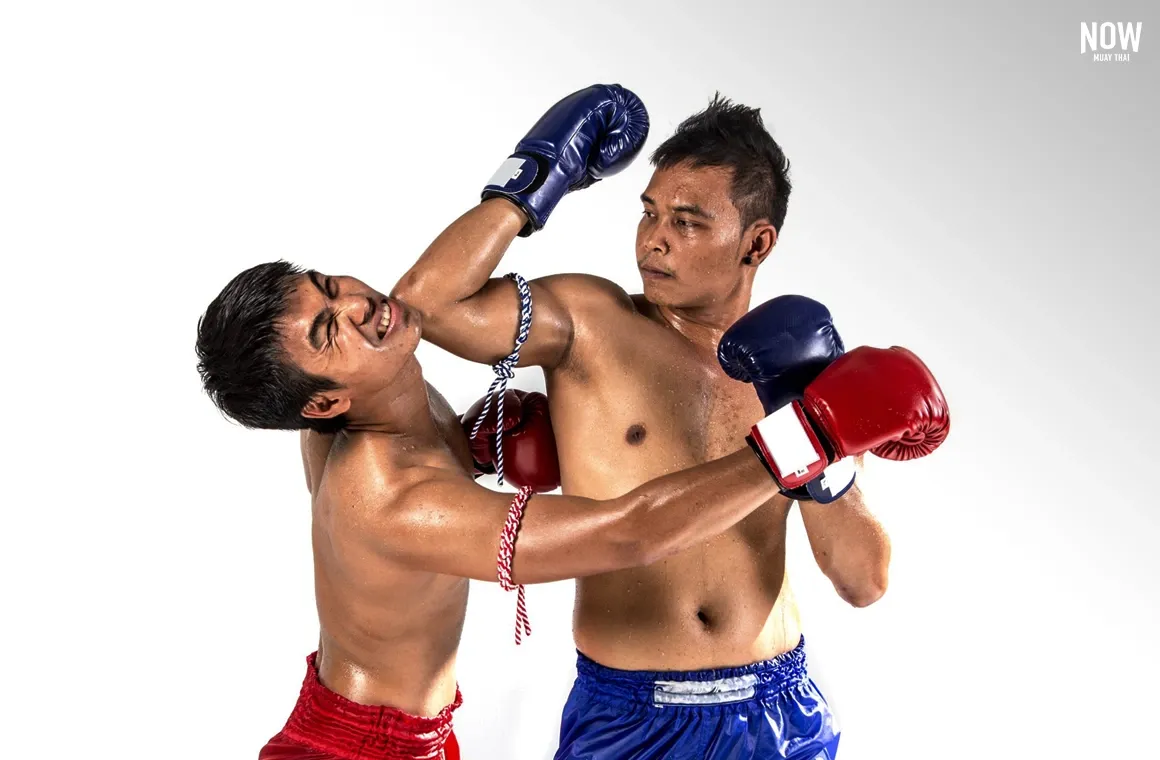 Two Muay Thai fighters demonstrate "Kon Muay Kae Sok," a defensive elbow strategy. One fighter expertly blocks an elbow strike with a raised arm while preparing to counter, highlighting the precision and defensive mastery of Muay Thai techniques.
Two Muay Thai fighters demonstrate "Kon Muay Kae Sok," a defensive elbow strategy. One fighter expertly blocks an elbow strike with a raised arm while preparing to counter, highlighting the precision and defensive mastery of Muay Thai techniques.
The knees (khao) are a crucial weapon for attacking an opponent's midsection, particularly when locked in a clinch. Fighters use their knees to strike the ribs, abdomen, and even the head of an opponent. The knee is an incredibly versatile tool—it can be used to deliver short, powerful strikes in rapid succession or to launch devastating blows from a longer distance. A well-placed knee can knock the wind out of an opponent or significantly wear them down over time.
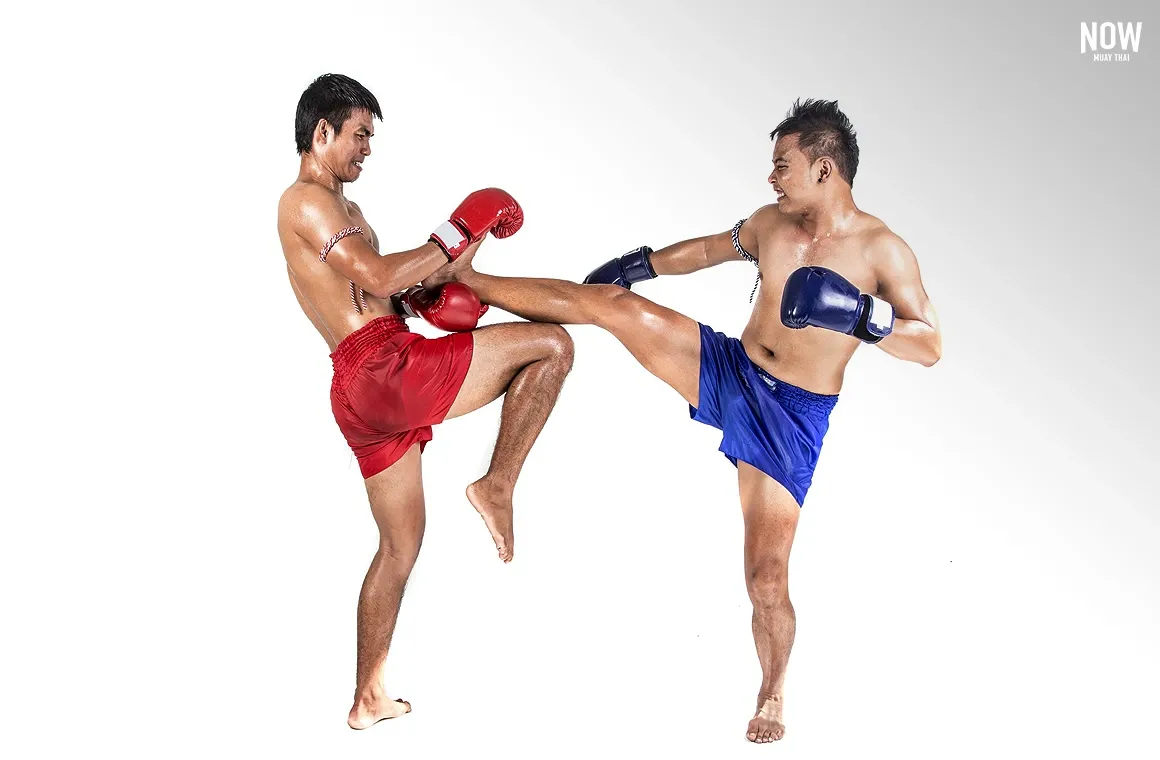 Two Muay Thai fighters showcase "Kon Muay Kae Khao," a defensive knee strategy. One fighter blocks a knee strike with his arm while positioning himself for a counterattack, demonstrating the effective defensive techniques used to neutralize knee strikes in Muay Thai.
Two Muay Thai fighters showcase "Kon Muay Kae Khao," a defensive knee strategy. One fighter blocks a knee strike with his arm while positioning himself for a counterattack, demonstrating the effective defensive techniques used to neutralize knee strikes in Muay Thai.
The shins and feet (khaeng and thao) serve as both offensive and defensive tools. The roundhouse kick is one of the most iconic strikes in Muay Thai, and it's delivered with the shin, not the foot. This technique generates immense power and is used to target the legs, body, and head of an opponent. The shins are also used to block incoming kicks, effectively turning the legs into both a weapon and a shield. The ability to kick with precision and to block incoming strikes adds a dynamic layer to Muay Thai’s stand-up combat, making it highly effective in any fight scenario.
 Two Muay Thai fighters demonstrate "Kon Muay Kae Tae," a defense against a kick. One fighter skillfully blocks a kick with his foot while preparing for a counterattack, highlighting the precise and strategic defense techniques in Muay Thai to neutralize powerful kicks.
Two Muay Thai fighters demonstrate "Kon Muay Kae Tae," a defense against a kick. One fighter skillfully blocks a kick with his foot while preparing for a counterattack, highlighting the precise and strategic defense techniques in Muay Thai to neutralize powerful kicks.
What makes Muay Thai truly unique is not only its physicality but the strategic depth embedded in every movement. Known as Kon Muay Thai, this refers to the art of seamlessly combining offensive and defensive techniques. The moves are divided into two main types: attack techniques and counter-attack techniques. Attack techniques focus on initiating strikes to overwhelm the opponent, while counter-attack techniques involve reading the opponent’s moves and responding with precision counter-attacks. This constant exchange of attack and defense, combined with quick thinking, makes Muay Thai a true mental and physical battle.
The charm of Muay Thai lies in its fluid transitions between offense and defense, where fighters must outsmart each other in real-time. This combination of skill, strength, and strategy makes Muay Thai not just a combat sport, but a captivating martial art admired worldwide.
Muay Thai as a Complete Workout
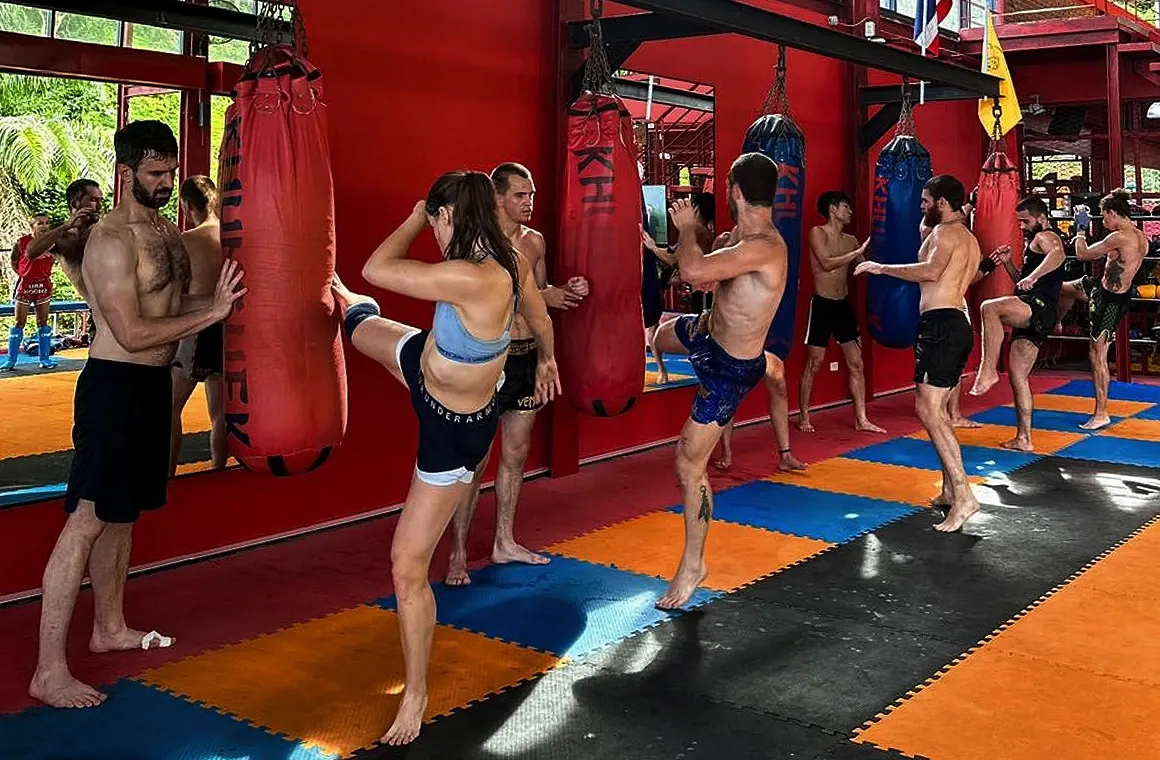 A group of people practicing Muay Thai as part of a full-body workout, demonstrating why Muay Thai is a popular choice for fitness. The training engages strength, endurance, flexibility, and coordination, offering an intense and effective workout for all levels, while also improving mental focus and stress relief.
A group of people practicing Muay Thai as part of a full-body workout, demonstrating why Muay Thai is a popular choice for fitness. The training engages strength, endurance, flexibility, and coordination, offering an intense and effective workout for all levels, while also improving mental focus and stress relief.
Credit: Khun Suek Muay Thai facebook
Beyond its combat and self-defense aspects, Muay Thai offers a complete full-body workout, making it an ideal fitness regimen for enthusiasts. Every session engages multiple muscle groups, helping to build strength, endurance, and flexibility. Punches, kicks, knee strikes, and elbow techniques activate the core, legs, arms, and back, providing a dynamic form of resistance training that tones muscles while boosting cardiovascular fitness.
Muay Thai also improves coordination and balance, as practitioners learn to master quick footwork and precise strikes. It's a high-intensity workout that burns calories and promotes fat loss, with some sessions burning over 1,000 calories per hour. Additionally, the rhythmic nature of Muay Thai allows for stress relief, as repetitive movements help clear the mind and release built-up tension. For many, Muay Thai isn't just a sport—it’s a holistic approach to physical conditioning and mental well-being.
Muay Thai in Modern Pop Culture
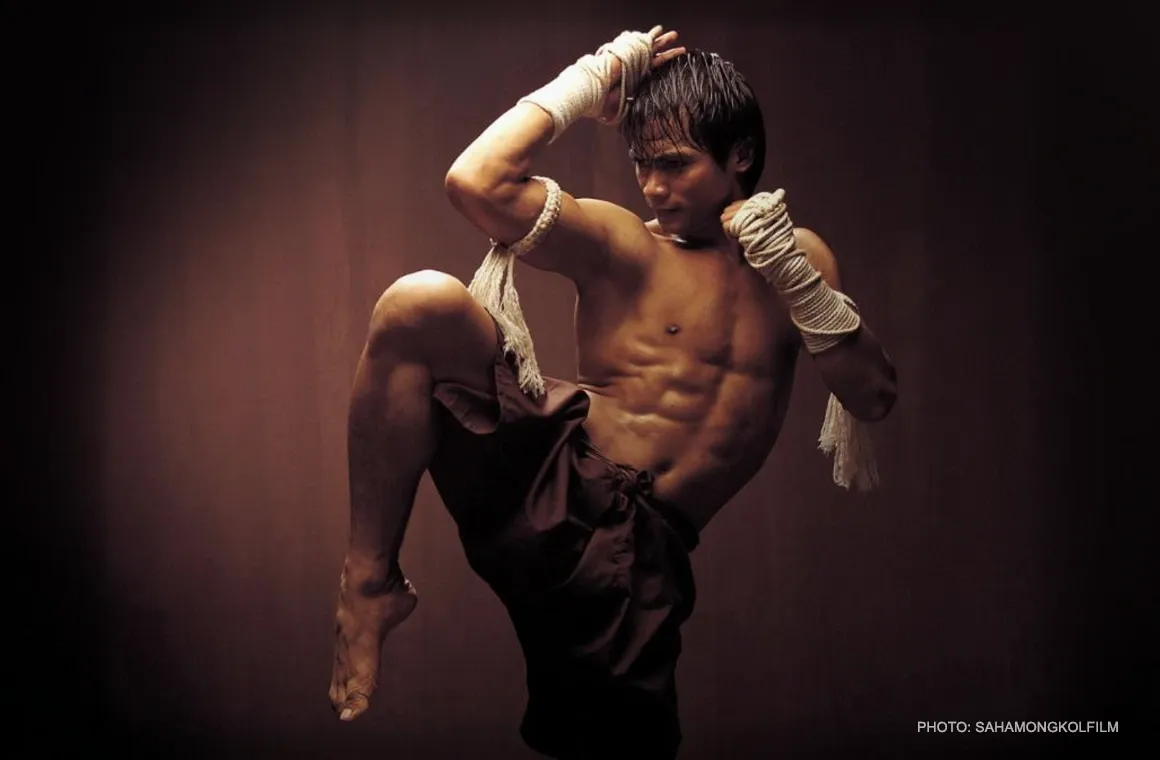 Tony Jaa performing a powerful Muay Thai move in the iconic Ong Bak movie, showcasing the beauty and effectiveness of Muay Thai's techniques. His portrayal of Muay Thai in the film has inspired global admiration for the martial art, contributing to its widespread popularity and highlighting its cultural significance
Tony Jaa performing a powerful Muay Thai move in the iconic Ong Bak movie, showcasing the beauty and effectiveness of Muay Thai's techniques. His portrayal of Muay Thai in the film has inspired global admiration for the martial art, contributing to its widespread popularity and highlighting its cultural significance
credit: Sahamongkolfilm
Muay Thai’s influence has extended far beyond Thailand, becoming a global phenomenon thanks to its presence in movies, TV shows, and international combat sports organizations like UFC and ONE Championship. The art of Muay Thai has been showcased in Hollywood blockbusters such as Ong Bak and Kickboxer, which brought its raw, dynamic style to a global audience. Fighters like Tony Jaa have demonstrated Muay Thai’s striking techniques in ways that captivated viewers around the world, making the art form synonymous with cinematic martial arts excellence.
In addition to its presence in film, Muay Thai has also become a staple in combat sports organizations like the UFC and ONE Championship. Fighters such as Rodtang Jitmuangnon, known for his relentless aggression and durability, have brought a new level of respect to Muay Thai’s presence in global combat sports. His explosive fights in ONE Championship, alongside other fighters who use Muay Thai techniques, continue to attract new fans to the sport.
 A group of ONE Lumpinee Muay Thai champions and fighters proudly displaying their belts, showcasing the skill, dedication, and excellence that define modern Muay Thai fighters. These athletes represent the pinnacle of Muay Thai, bringing the sport to global prominence through their achievements in the ring.
A group of ONE Lumpinee Muay Thai champions and fighters proudly displaying their belts, showcasing the skill, dedication, and excellence that define modern Muay Thai fighters. These athletes represent the pinnacle of Muay Thai, bringing the sport to global prominence through their achievements in the ring.
credit: ONE Championship facebook
Celebrities have also embraced Muay Thai for its physical and mental benefits. From Jason Statham and Gigi Hadid to Ryan Gosling and Angelina Jolie, many stars are incorporating Muay Thai into their fitness routines, fueling the sport’s popularity among a broader audience. Celebrities aren’t just dabbling in the basics but are actively training to develop their skills, bringing attention to Muay Thai’s full-body conditioning and stress-relief benefits.
The global Muay Thai community is also filled with homegrown superstars. Buakaw Banchamek, known for his incredible power and relentless fighting style, has become a global Muay Thai icon. Saenchai Muaythaigym, with his playful, unorthodox techniques and impeccable timing, is revered for his tactical brilliance in the ring. Rodtang Jitmuangnon, a fan favorite, is admired for his aggressive style and iron chin, earning him a reputation as one of the toughest fighters in combat sports. Lastly, Superbon Superbon Training Camp, famous for his devastating head-kick knockouts, has established himself as a top-tier Muay Thai athlete. These fighters inspire both seasoned practitioners and new fans worldwide, showcasing the power and beauty of Muay Thai at its highest level.
 Buakaw Banchamek, the iconic modern Muay Thai fighter, known for his powerful kicks, relentless fighting style, and global impact on the sport. Buakaw’s skill and dedication have made him a symbol of Muay Thai excellence, inspiring fighters and fans worldwide.
Buakaw Banchamek, the iconic modern Muay Thai fighter, known for his powerful kicks, relentless fighting style, and global impact on the sport. Buakaw’s skill and dedication have made him a symbol of Muay Thai excellence, inspiring fighters and fans worldwide.
Muay Thai’s rise in pop culture, from Hollywood screens to the global combat sports stage, continues to fuel its growth worldwide, making it not only a revered martial art but also a beloved cultural export.
Muay Thai Gyms Around the World
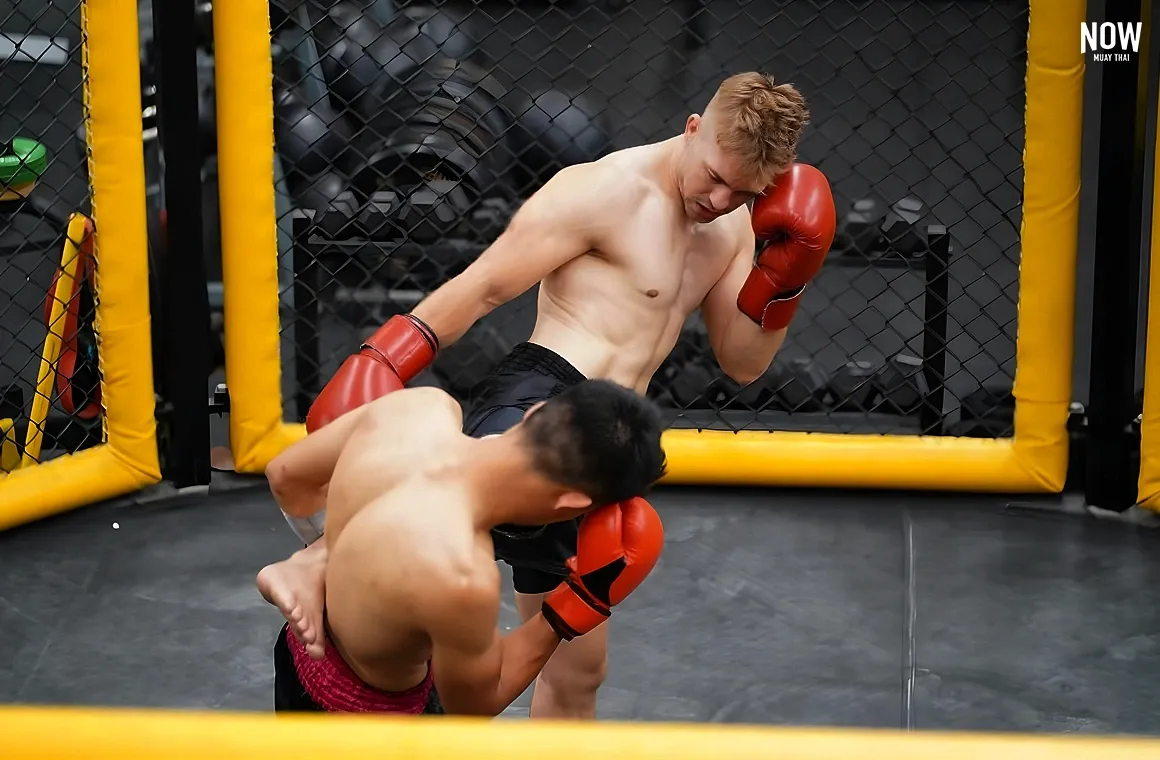 Two men practicing Muay Thai techniques in a gym, representing the global reach of Muay Thai with over 30,000 gyms worldwide. This scene highlights the sport's growing popularity and accessibility, bringing the art of Muay Thai to enthusiasts across the globe.
Two men practicing Muay Thai techniques in a gym, representing the global reach of Muay Thai with over 30,000 gyms worldwide. This scene highlights the sport's growing popularity and accessibility, bringing the art of Muay Thai to enthusiasts across the globe.
Muay Thai has gained widespread popularity beyond Thailand, with gyms sprouting up in countries like the U.S., Europe, Australia, and China. Training in these gyms varies in quality—some follow strict, traditional Muay Thai standards, while others offer kickboxing classes that blend elements of Muay Thai. Many of these gyms are led by Thai trainers or skilled international fighters who have studied the art extensively. They pass on their knowledge to both fitness enthusiasts and those eager to learn authentic Muay Thai.
One of the key organizations promoting Muay Thai globally is IFMA (International Federation of Muaythai Associations), which focuses on amateur Muay Thai, particularly among youth. IFMA has played a significant role in spreading Muay Thai to younger generations worldwide.
These international gyms often serve as a gateway for Muay Thai enthusiasts, igniting their desire to visit Thailand to experience authentic Muay Thai training firsthand, further immersing themselves in the rich cultural heritage of this beloved martial art.
Why Everyone Loves Muay Thai and Why Thailand is the Ultimate Training Destination
 A woman stands in awe in front of a temple in Thailand, reflecting why so many people love to train Muay Thai in its homeland. Muay Thai offers more than just a powerful workout—it’s a journey into Thai culture, blending fitness, mental strength, and rich traditions that attract enthusiasts from around the world.
A woman stands in awe in front of a temple in Thailand, reflecting why so many people love to train Muay Thai in its homeland. Muay Thai offers more than just a powerful workout—it’s a journey into Thai culture, blending fitness, mental strength, and rich traditions that attract enthusiasts from around the world.
People around the world are drawn to Muay Thai because it’s more than just a martial art—it's a complete mind and body workout, a test of mental strength, and a deep dive into Thai culture. The combination of powerful techniques, strategic depth, and rich traditions makes Muay Thai exciting and accessible for people of all backgrounds. Whether they’re inspired by the thrill of competition or simply looking to improve their fitness, Muay Thai offers something for everyone.
For those serious about learning the art, Thailand is the ultimate destination. There's nothing quite like training Muay Thai in its birthplace, surrounded by the culture that shaped it. Training at a local gym, guided by seasoned Thai fighters, offers an experience that can’t be replicated elsewhere. It's a journey not just into martial arts but into the heart of Thailand itself.
Ready to start your Muay Thai adventure?
Visit Nowmuaythai.com to explore top-tier gyms across Thailand, with options for everyone—from free trials to nearly free classes. Don’t miss the chance to train like a pro in the home of Muay Thai
Learn more about Muay Thai
Back








